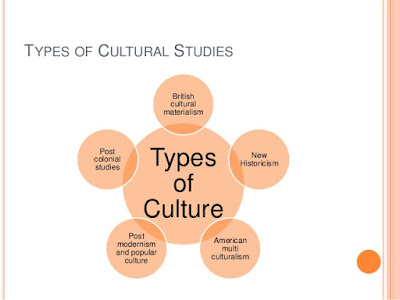What is cultural studies?
Cultural Studies is not a tightly coherent unified movement with a fixed agenda, but a loosely coherent group of tendencies, issues, and questions.”FIVE TYPES OF CULTURAL STUDIES :
BRITISH CULTURAL MATERIALISM :
Cultural materialism emerged as a theoretical movement in the early 1980s along with new historicism, an American approach to early modern literature, with which it shares much common ground. The term was coined by Williams, who used it to describe a theoretical blending of leftist culturalism and Marxist analysis. Cultural materialists deal with specific historical documents and attempt to analyze and recreate the zeitgeist of a particular moment in history.
cultural materialism began in earnest in the 1950s with the work of F. R. Levis which was heavily influenced by Matthew Arnold's bourgeois culture . Levis sought to use the education system to distribute literary knowledge and appreciation more widely .
Cultural materialists analyze the processes by which hegemonic forces in society appropriate canonical and historically important texts, such as Shakespeare and Ayusten, and utilize them in an attempt to validate or inscribe certain values on the cultural Imagenery. Jonathan Dollimore and Alan Sinfiled , authors of Political Shakespeare have had considerable influence in the development of this movement and their book is considered to be a seminal text. They have identified four defining characteristics of cultural materialism as a theoretical device:
- Historical context
- Close textual analysis
- Political commitment
- Theoretical method
CONTRIBUTION OF MITCHEL Foucault in NEW HISTORIC-ISM :
"power is everywhere because it comes from everywhere"
the simple function of new historic-ism is that it reads the questions from past through new historic-ism and to do so one has to to go beyond book for the real history.To a considerable extent, Foucault can be seen as one of the guiding spirits behind the school of criticism known as New Historicism. The leading lights of New Historicism such as Stephen Greenblatt consciously sought to challenge prevailing conceptions of textual interpretation by offering up parallel readings of texts grounded in specific socio-historical and cultural conditions.
HOW CAN NEW HISTORICISM HELP IN ANSWERING THE QUESTION RAISED AGAINST LAPUTA EPISODE IN GULLIVERS TRAVELS ?



No comments:
Post a Comment